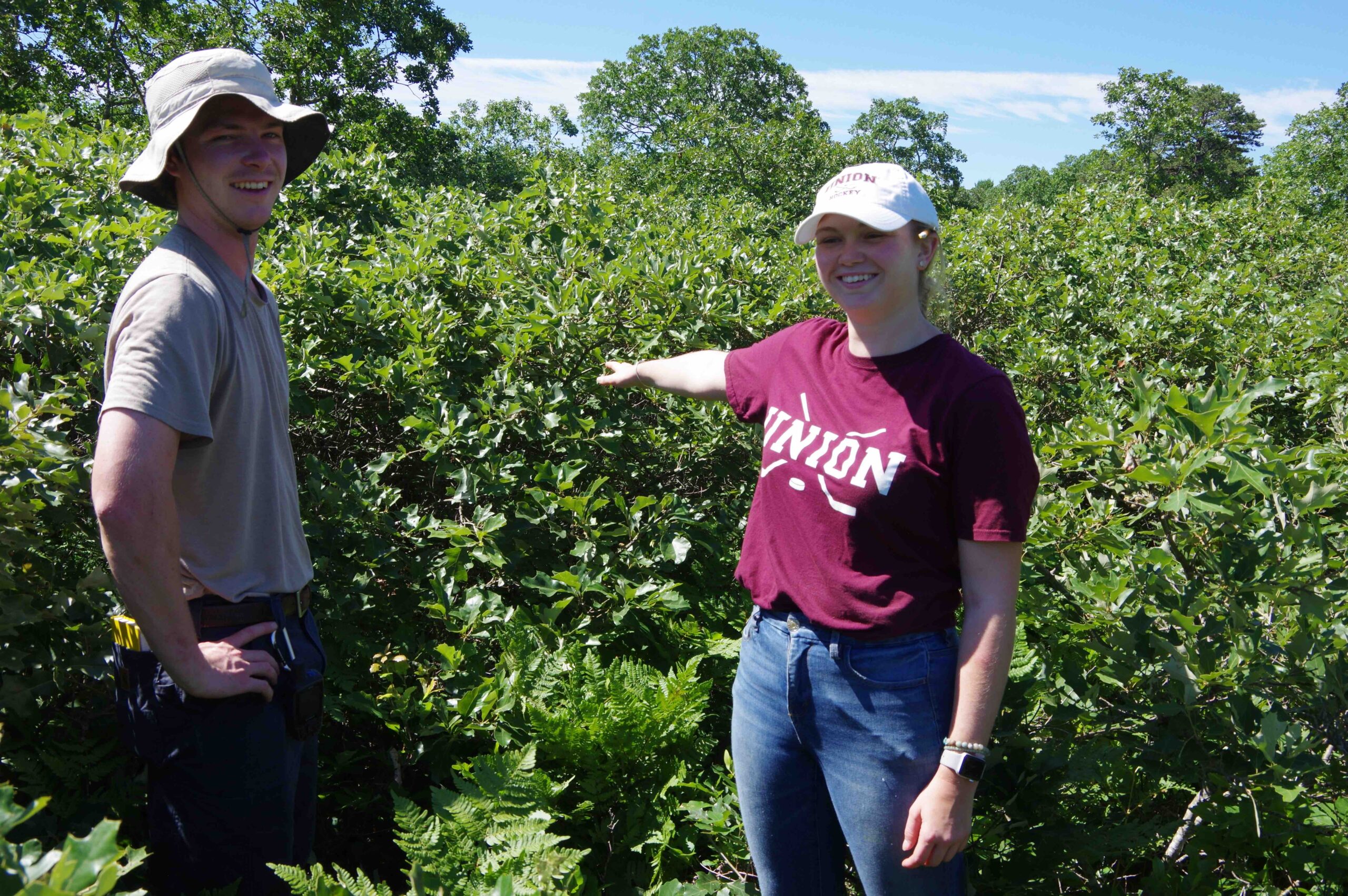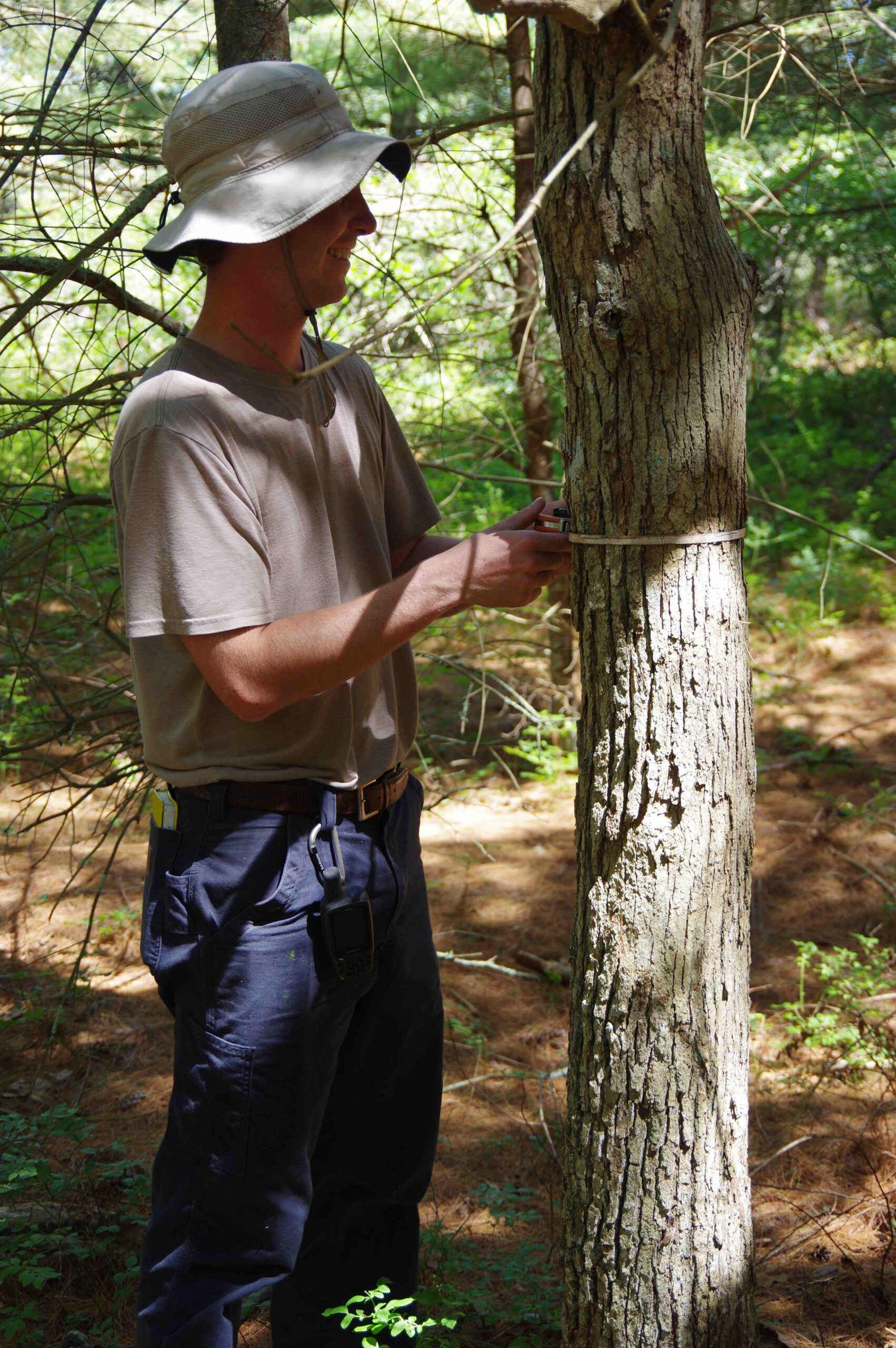The Sandplain Grassland Network’s review of grassland studies and interviews with managers of grassland and related disturbance-dependent habitats indicated that decreases in the frequency and intensity of disturbances were leading to increased cover of woody vegetation and decreases in plant species richness. At the same time, natural area managers nationwide increasingly recognize the importance of natural lands for offsetting carbon emissions from fossil fuel burning.
In the summer of 2022 a team of scientists from the Woodwell Climate Science Center teamed with the Sheriff’s Meadow Foundation and the Martha’s Vineyard Commission to examine species and carbon change in more than 100 vegetation plots across the Island that were located and surveyed by a team from Harvard Forest led by Glenn Motzkin 22 years ago. A Woodwell field team of Patrick Farrar and Julia Charest visited 32 of the former 20 x 20 meter plots in oak woodlands, 19 in scrub oak shrubland, 21 in grasslands, and 29 in maritime shrublands and other habitats. They identified and estimated cover of all the plant species. They also measured the diameter at breast height of all trees to quantify changes in carbon in aboveground biomass since the original sampling in 2000. Twenty five of the plots were in the Manuel F. Correllus State Forest. The study will use the biomass and carbon in the plots to validate estimates of Island-wide aboveground carbon calculated from detailed LiDAR imagery obtained in 2022 by the Sheriff’s Meadow Foundation
Preliminary results indicate that plant species richness has declined over the more than two decades. Carbon storage increased in woodlands across the Island, but increases (and hence carbon sequestration) was smaller than occurs in forests on the mainland on richer and moister soils. More results will follow later in 2023. The study will provide important information for land managers faced with the challenge of balancing disturbances required to sustain biodiversity with increases in carbon storage that are typically higher in undisturbed habitats.

Pat Farrar and Julia Charest sampling a scrub oak plot in the Correllus State Forest in July 2022.

Pat Farrar measures tree diameter at breast height (dbh) that will be combined with species-specific allometric equations to estimate individual tree and plot aboveground biomass and biomass carbon.
By Chris Neill and Pat Farrar, Woodwell Climate Research Center

